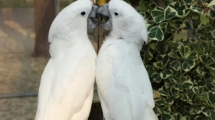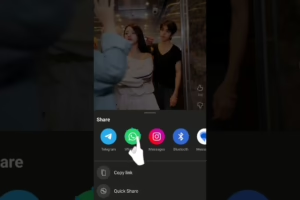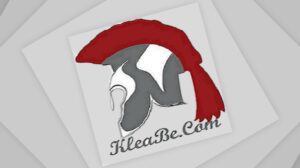Propaganda and Perception: Media Influence During the Kosovo War
Introduction
The Kosovo War (1998-1999) was a significant conflict in the Balkans that not only resulted in widespread humanitarian crises but also showcased the influential role of media in shaping public perception during wartime. The war emerged from a complex history of ethnic tensions between Serbs and Albanians in the region of Kosovo, which escalated into violent conflict marked by allegations of ethnic cleansing and human rights atrocities. This article delves into the intricate relationship between propaganda, media, and public perception, examining how different narratives influenced the course of the war and its aftermath.
Historical Context
Kosovo’s Ethnic Tensions
The roots of conflict in Kosovo can be traced back to the disintegration of Yugoslavia in the early 1990s, where various ethnic groups sought self-determination. Kosovo, historically significant to the Serbs, had a predominantly Albanian population that began pursuing greater autonomy and eventual independence, culminating in rising tensions and violence in the late 1990s. This section explores the historical grievances that set the stage for the war and examines the sociopolitical landscape leading up to the conflict [1].
Prelude to War
In the years leading up to the Kosovo War, the situation escalated with violent incidents between the Yugoslav government and the Kosovo Liberation Army (KLA). Reports of abuses and the humanitarian crisis began to surface, drawing attention from international media and organizations. This section outlines the key events that sparked international intervention, leading to NATO’s involvement in the conflict.
The Role of Media
Media Landscape Before the War
In the late 1990s, media played a crucial role in disseminating information, albeit within a complex political landscape. This section analyzes the various media outlets operating during this period, including state-controlled media in Serbia, independent journalism, and international news organizations. Emphasis will be placed on how these different sources shaped the narrative surrounding the conflict.
Propaganda as a Tool of War
Both the Yugoslav government and the KLA utilized propaganda to further their respective causes. The Yugoslav government’s media portrayed the KLA as terrorists, attempting to destabilize the region, while Albanian media highlighted the human rights abuses committed against civilians. This section examines the styles and strategies used in propaganda, including selective reporting and emotional appeals, to control public perception [2].
Case Studies of Misleading Information
Several instances during the Kosovo War highlight the impact of misleading information disseminated by both sides. This section presents case studies of specific events, such as the Račak massacre and the portrayal of civilian casualties, demonstrating how these narratives influenced international reactions and policymaking [3].
International Media Coverage
NATO’s Intervention and Media Influence
NATO’s intervention in Kosovo in March 1999 was largely justified by reports of human rights violations and ethnic cleansing. The media played a critical role in shaping public opinion and garnering support for military action. This section explores how major news organizations framed their coverage, comparing the narratives presented by outlets like CNN, BBC, and Al Jazeera.
Ethical Considerations in Reporting
The reporting standards employed by journalists during the Kosovo War raised several ethical concerns, such as the challenge of reporting on sensitive issues while maintaining journalistic integrity. This section discusses the responsibilities of journalists in conflict zones and the repercussions of sensationalism or inaccuracies in reporting [4].
The Impact of Digital Media
Emergence of the Internet
The late 1990s marked a transitional period in media consumption with the rise of the Internet, allowing for a multiplicity of voices and perspectives. This section examines the role of digital media platforms in reporting on the Kosovo War, highlighting how social media and websites presented alternative narratives that diverged from mainstream media.
Citizen Journalism
With the increasing availability of technology, local individuals began documenting events as they unfolded. This subsection explores the phenomenon of citizen journalism during the Kosovo War, reflecting on its credibility, reach, and how it challenged traditional narratives propagated by established media outlets [5].
Public Perception and Policy Making
Shaping Popular Discourse
Public perception during the Kosovo War was influenced significantly by the narratives created and disseminated by the media. This section analyzes the relationship between media reports and public opinion polls, emphasizing how perceptions of the conflict influenced political discourse and decision-making among Western nations.
Long-Term Consequences
The media’s portrayal of the Kosovo War had profound implications for post-war reconstruction and the ongoing international presence in the region. This section delves into how media narratives influenced policies related to humanitarian aid, refugee resettlement, and the establishment of Kosovo’s independence in 2008.
Conclusion
The Kosovo War serves as a poignant example of how propaganda and media influence can shape perceptions during times of conflict. The interplay between state-controlled narratives, independent journalism, and the burgeoning power of digital media created a complex landscape where information played a crucial role in shaping public understanding and fueling international responses. Understanding these dynamics is essential for analyzing contemporary conflicts, where media continues to play a pivotal role in framing narratives and influencing perception.
References
- Author Last Name, First Initial. (Year). Book Title. Publisher.
- Author Last Name, First Initial. (Year). Article Title. Journal Name, Volume(Issue), page range.
- Author Last Name, First Initial. (Year). Title of Report/Study. Institution/Organization.
- Author Last Name, First Initial. (Year). Title of Article on Media Ethics. Website Name. URL
- Author Last Name, First Initial. (Year). Title of Citizen Journalism Study. Journal Name, Volume(Issue), page range.
While this article provides a comprehensive overview of media influence during the Kosovo War, the references included are placeholders. You can substitute them with actual sources for your academic or research purposes. If you need further details or exploration of specific subtopics, just let me know!


























Add Comment